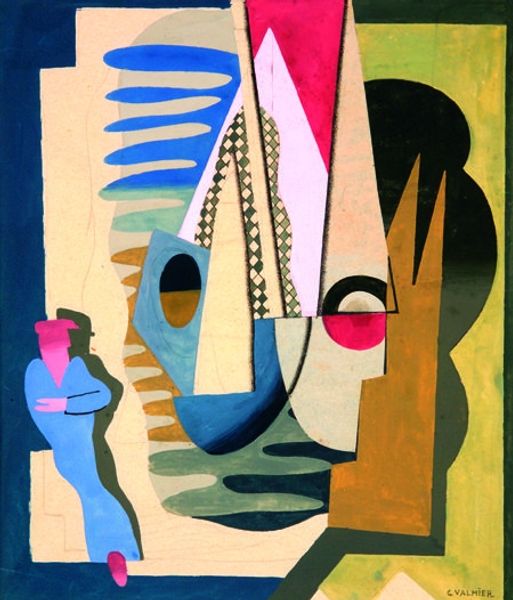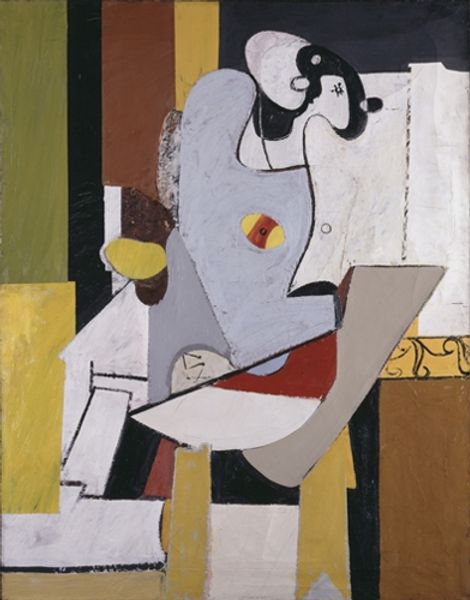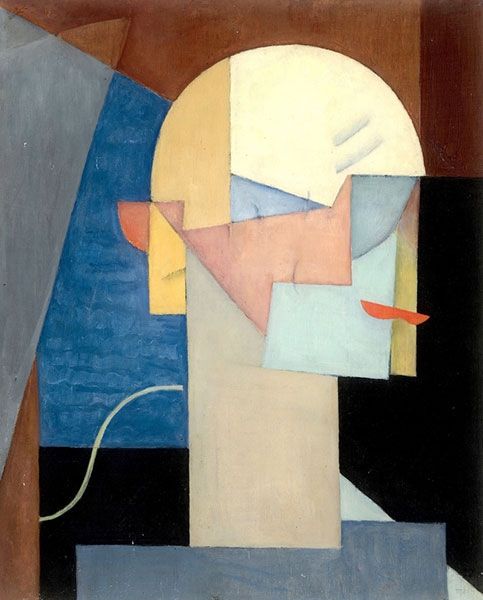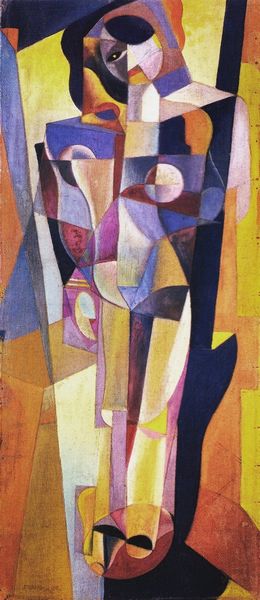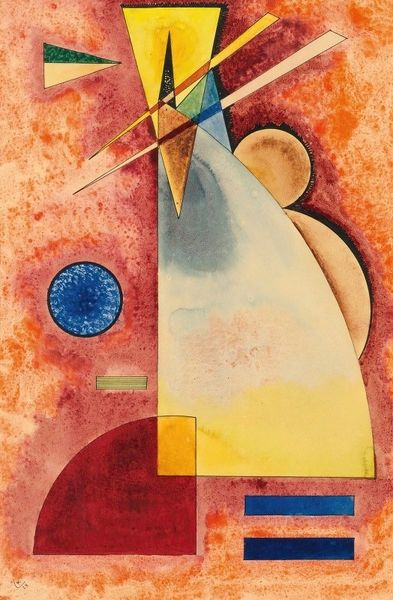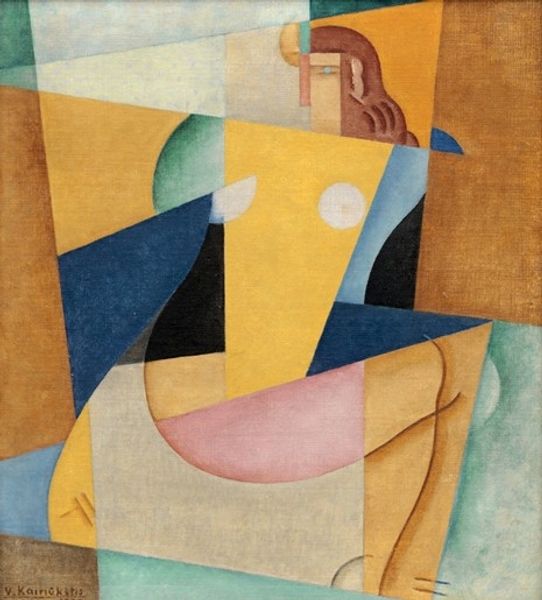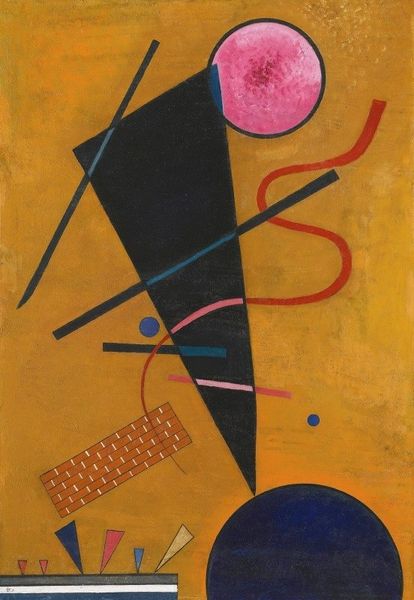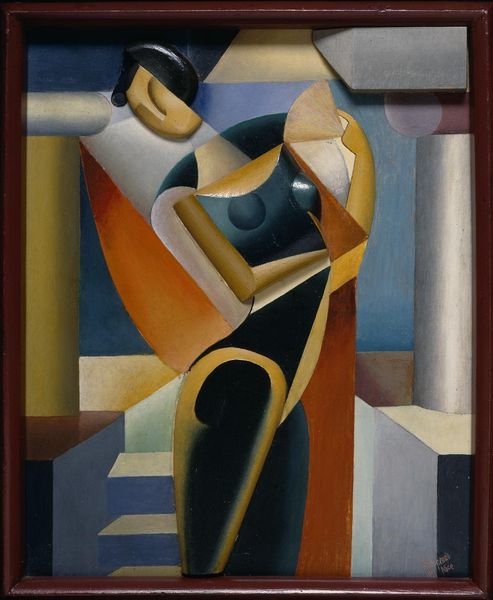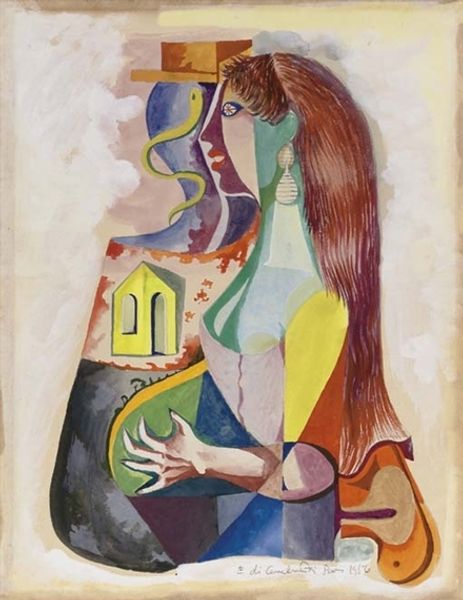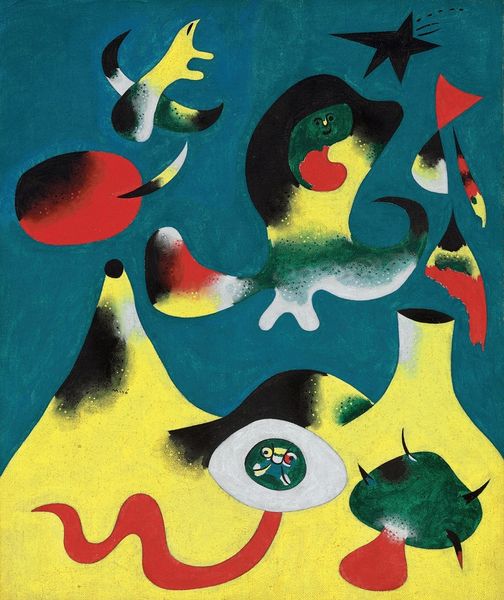
Copyright: Enrico Prampolini,Fair Use
Curator: Here we have Enrico Prampolini’s "Figura nello spazio I," a painting rendered in oil that dates back to 1937. Editor: Whew, there is a lot happening. I can't help but feel…uneasy. It's like looking at something that’s trying to escape the canvas, all these biomorphic shapes floating in this indefinite space. Curator: That feeling isn’t unintentional. Prampolini was deeply involved with the Futurist movement, which, at the time, promoted dynamism, speed, and the energy of the machine age. Editor: I see it now. The movement! But instead of steel and cogs, these almost feel…organic. The painting feels alive, like cells dividing or some weird cosmic ballet, if you know what I mean? Curator: The interwar period saw the movement pivoting towards a second phase. His focus wasn't only machines and speed, but the intersection of technology with human existence, sometimes veering toward abstraction like we see here. He began exploring these themes more deeply, responding to political turmoil as Europe moved towards yet another war. Editor: You know, I appreciate knowing about the political context. That sort of weight explains the slightly disquieting feeling, it's more than the abstract shapes. There’s something about those muted blues. Are those brushstrokes deliberate? I mean they lead your eyes upwards. Curator: They certainly guide your vision, which makes the painting active. And consider Prampolini's cultural influence. As a member of the artists’ union he promoted artists within the Fascist system to gain access to resources while ideologically attempting to keep his and others’ artwork from being used as propaganda. A balancing act to be sure. Editor: That’s intense! But the fact that it feels… both so intimate and expansive. Like he crammed the feeling of an entire era into these forms is fascinating. And now that you explained it, the uneasiness isn't fear, but the reflection of being an organism stuck between macro and micro. It makes the title now "Figure in Space 1" suddenly feel…gigantic. Curator: I find that shift in perspective so vital when looking at artwork born from such fraught times. It serves to ask questions that perhaps we didn't originally expect, questions that linger well beyond our time. Editor: Right? These paintings outlive us and ask these same questions to newer faces, new generations! I see the political unease as more of a warning sign of the world that once was and could become. Wild.
Comments
No comments
Be the first to comment and join the conversation on the ultimate creative platform.
